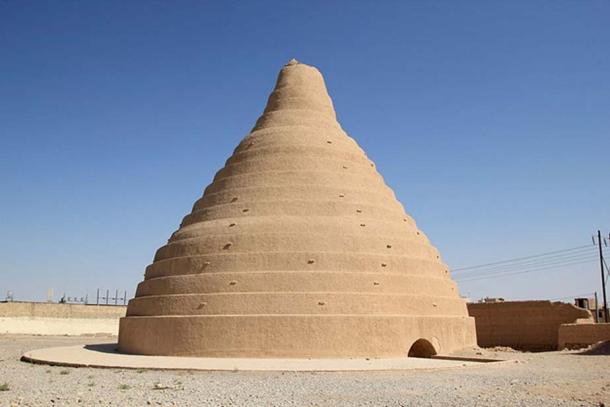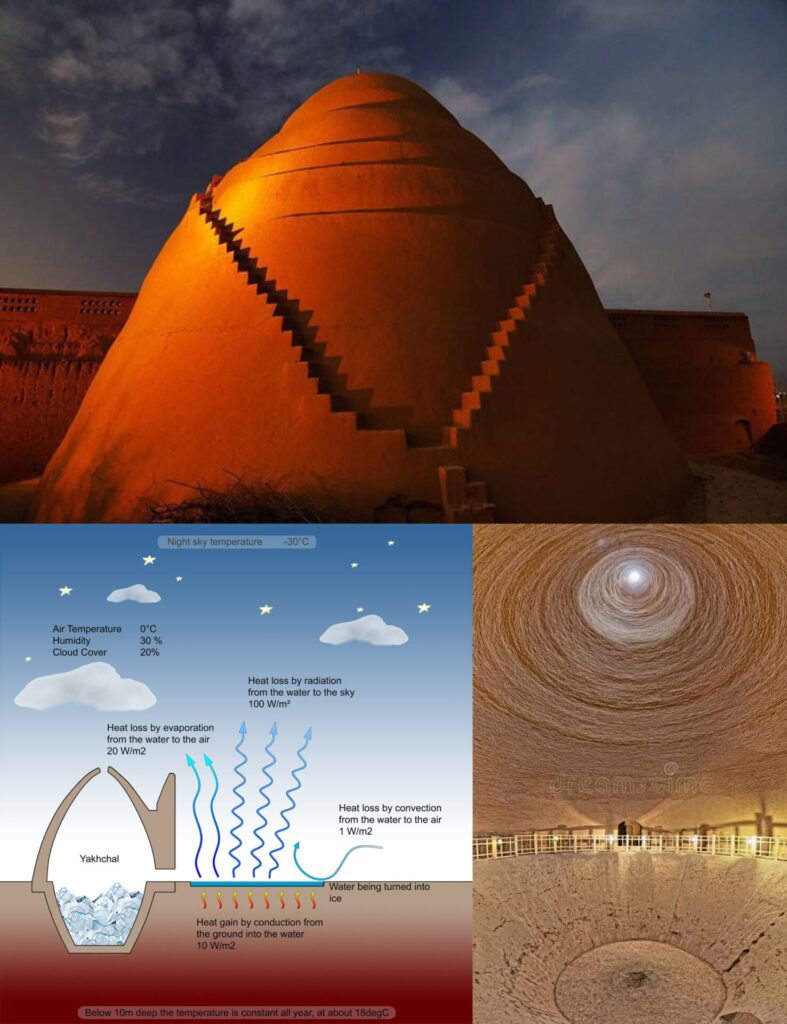
Yakhchāl (Persian: یخچال; yakh meaning “ice” and chāl meaning “pit”) is an ancient type of evaporative cooler. It was developed in Persia over 2,400 years ago, and was used to produce and store ice in the desert.
Yakhchāls are large, conical structures with a thick, insulated interior. They are typically made of mud brick or stone, and are often decorated with intricate mosaics and carvings.

In the winter, water was channeled into the yakhchāl and allowed to freeze. The thick insulation of the structure helped to keep the ice frozen throughout the summer.
Yakhchāls were used to store ice for a variety of purposes, including food preservation, cooling drinks, and treating medical conditions. They were also used to provide ice for religious and cultural ceremonies.
How Yakhchāls Work
Yakhchāls work by using a combination of evaporative cooling and thermal insulation. Evaporative cooling is a process in which water cools as it evaporates. This is because evaporation requires energy, which is taken from the surrounding air.

Yakhchāls are designed to maximize evaporative cooling. The conical shape of the structure helps to create a natural airflow, which draws air up through the yakhchāl. This air then passes over water channels, where it evaporates and cools the interior of the structure.
The thick insulation of the yakhchāl also helps to keep the ice frozen. The insulation prevents heat from the outside from entering the yakhchāl, and it also prevents the cold air from escaping.
The Importance of Yakhchāls
Yakhchāls were an essential part of Persian life for centuries. They allowed people to store ice in the desert, which was essential for food preservation and medical treatment. Yakhchāls also played an important role in Persian culture and religion.

Today, there are still hundreds of yakhchāls standing in Iran. Many of them are in ruins, but some have been restored and are now used as museums or cultural centers.
Yakhchāls are a testament to the ingenuity and engineering skill of the Persian people. They are also a reminder of the importance of ice in human history.

Leave a Reply